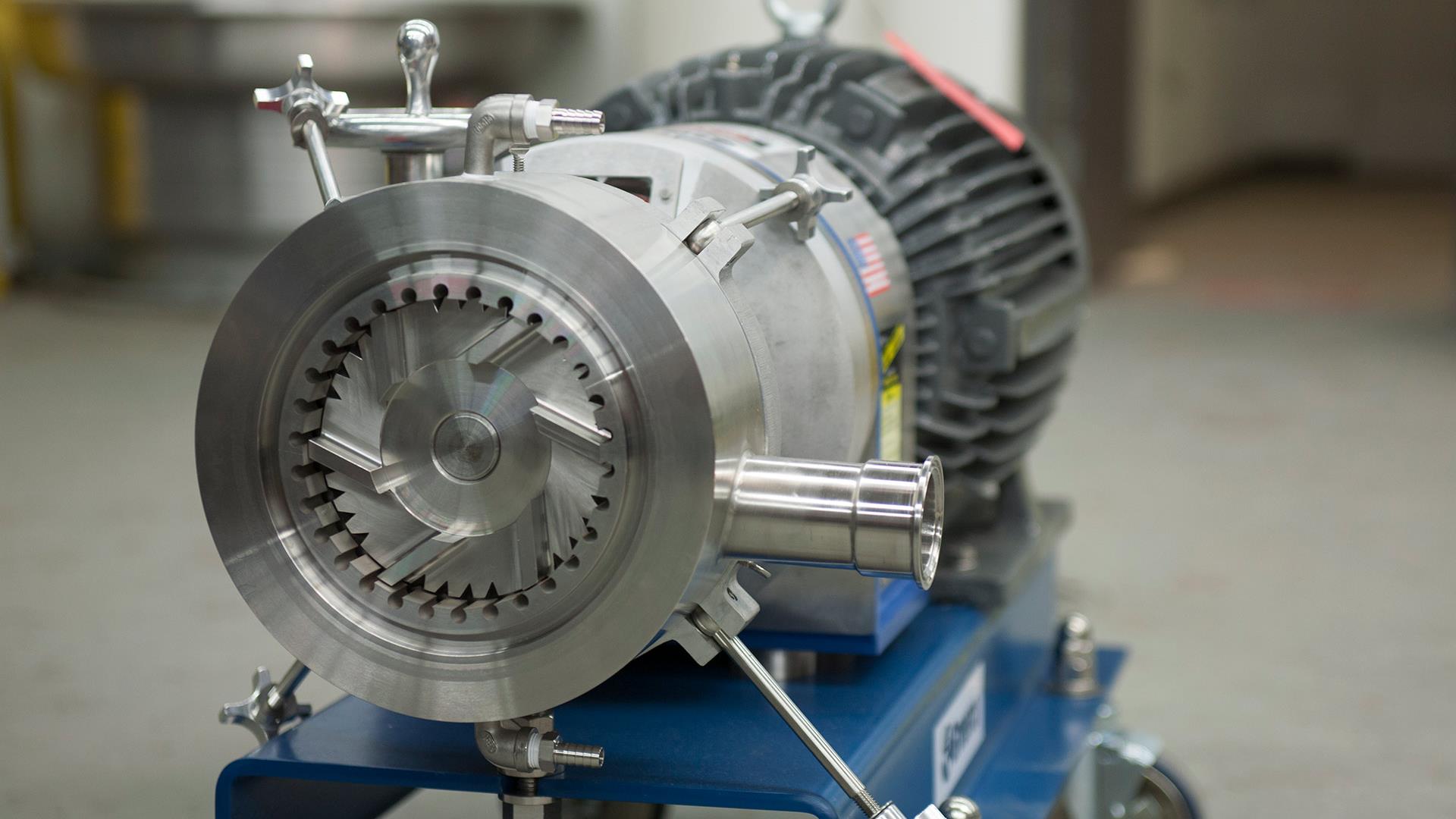A colloid mill is a machine use to disintegrate solid particles or droplet size of a suspended or emulsion liquid. The machine consist of an inlet (which is subject to tremendous shearing action which effect uniform size time dispersion) and an outlet. Colloid milling operates on the principle of rotor-stator. The apparatus breaks down materials by forming material dispersion in a liquid. Shearing occurs in a narrow gap between a static cone (the stator) and a fast-turning cone (the rotor).
The rotor and stator are construct with toughened steel or corundum to help reduce wear. A colloid mill’s rotor may differ from one machine to another but for all, the operating principle is the same. Each fabricator incorporates specific features that result in operating efficiency changes.
The Colloidal Mill works on the rotor-stator principle. Due to shaving, when the material is pass between the narrow gap of rotor and stator milling surfaces, the size reduction is an effect. A rotor turns 3000-20000 rpm at high speeds. The high hydraulic shear levels applied to liquid disrupting structures in the fluid process. Colloid mills are often use to enhance the stability of suspensions, emulsions and can also be use to reduce solid particle size in suspensions.
Higher shear rates lead to smaller 1-micron droplets. The particle size is done by modifying the gap between the rotor and the stator based on a rotor that rotate at high speed and very close to a conical stator. Then the resultant is pass through to the area of discharge. The drain pipe removes the colloidal mill from the final product. If the final product has not been shear to the desire size, for further shearing it can be recirculate back to the machine.
The material, though the inlet hopper, place in the mill. Then it passes through the narrow gap between rotor and stator and thus reduces the size of the fine particle. A colloid mill is a device that produces hydraulic shear.
The colloid mill works to reduce the size of the droplets hanging on. The mill reduces the particle size. The colloid milling process is perform by adding the heavier liquid to the chamber of the mill which performs the shearing process. Once the heavier liquid has been added, the lighter material is added to the material to start the mill whether it is a solid mass or a liquid of varying viscosity.
When the molding portion of the function occurs, both materials are stirred together at a high speed within the mill. In other models, the stator remains constant and the rotor will do the function of rotation. It creates the required amount of hydraulic shear to break down the materials.
Colloid mills have various uses in the pharmaceutical industry. The most frequent use of colloid mill is for the comminution of solids and for the preparation of suspensions, particularly suspensions containing solids not wetted by the dispersion medium.
It’s also used to increase suspension and emulsion stability. It is used in colloidal dispersions, suspensions, emulsions, and ointment formulations. In one operation, the colloid mill is used to grind, disperse and homogenize ointment, cream, gels, and high viscous fluid.


